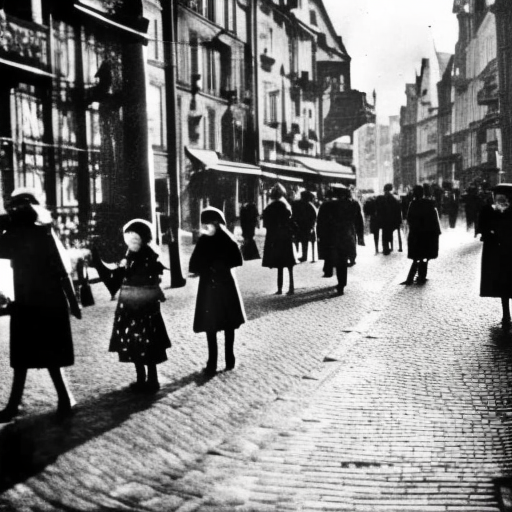Kristallnacht: The Night of Broken Glass
Kristallnacht, also known as the Night of Broken Glass, was a series of coordinated attacks against Jews in Nazi Germany on November 9-10, 1938. It marked a significant escalation in the persecution of Jews and foreshadowed the horrors of the Holocaust.
Background
By the late 1930s, the Nazi regime had implemented a range of discriminatory policies against Jews, including the Nuremberg Laws of 1935, which stripped them of their rights and citizenship. Anti-Semitic propaganda had created a hostile environment, and Jews faced increasing violence and harassment.
Triggering Event
The immediate trigger for Kristallnacht was the assassination of German diplomat Ernst vom Rath by Herschel Grynszpan, a young Polish Jew, in Paris on November 7, 1938. The Nazi propaganda machine seized on this event to incite anti-Jewish sentiment and justify the subsequent violence.
The Attacks
On the night of November 9, Nazi stormtroopers, known as the SA, and other paramilitary groups unleashed a wave of violence against Jewish individuals, businesses, and synagogues. They vandalized and looted Jewish-owned properties, smashing windows and destroying interiors. Firefighters were instructed not to intervene unless Aryan-owned properties were at risk.
Collaboration and Widespread Violence
The attacks were not limited to Germany but also occurred in Austria and the Sudetenland. Local non-Jewish populations, fueled by anti-Semitic propaganda, actively participated in the violence. Jewish homes, businesses, and synagogues were targeted, leaving a trail of destruction and despair.
Response of the Authorities
The German authorities, including the police and fire departments, did not intervene to stop the violence. Instead, they arrested around 30,000 Jewish men and sent them to concentration camps, including Dachau, Buchenwald, and Sachsenhausen. This marked a significant shift in the Nazi policy towards Jews, from discrimination to outright persecution.
Aftermath and Consequences
The aftermath of Kristallnacht was devastating. Approximately 267 synagogues were destroyed, and thousands of Jewish-owned businesses were ransacked or destroyed. The violence resulted in the deaths of at least 91 Jews, with many more injured. Jewish communities were left in a state of shock and terror.
International Reaction
The international community reacted with shock and condemnation to the events of Kristallnacht. Many countries, including the United States and the United Kingdom, recalled their ambassadors from Germany in protest. However, the response fell short of providing meaningful assistance or opening doors to Jewish refugees fleeing Nazi persecution.
Legacy
Kristallnacht marked a turning point in Nazi policy towards Jews, shifting from discrimination to outright violence and persecution. It served as a precursor to the Holocaust, during which six million Jews would be systematically murdered. The events of Kristallnacht also highlighted the indifference of the international community to the plight of Jews in Nazi Germany.
In conclusion, Kristallnacht was a pivotal event in the history of Nazi Germany and the Holocaust. The coordinated attacks against Jews on November 9-10, 1938, resulted in widespread destruction, violence, and persecution. The international community’s response fell short, and the event served as a grim foreshadowing of the horrors that would unfold in the coming years.












